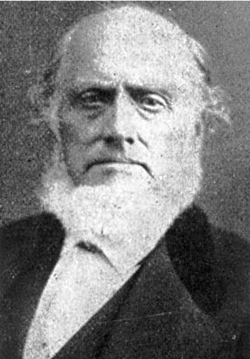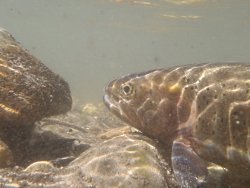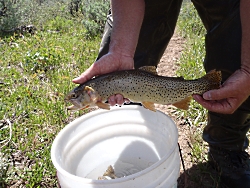

During his time as Territorial Fish Superintendent, Rockwood experimented with American shad, black bullhead catfish, king salmon, Sebago salmon, eastern brook trout, lake whitefish, lobsters, oysters, American eel, Asian carp and a host of other species.3 Many of the exotics came from Rockwood’s east coast friends, including the biblical looking Seth Green and pragmatic Spencer Fullerton Baird, Director of the newly created U.S. Fish Commission. Today we might think some of Rockwood’s experiments cruel, like the time he attempted to farm lobsters and oysters in the Great Salt Lake, but at the time it was cutting edge fish culture.
On the surface it is obvious Rockwood was attempting to improve Utah’s fisheries, whatever that may have looked like at the time. However, if you look closer you can also see a man trying to make Utah into something more familiar. Historians have long established that throughout the American West, settlers introduced nonnative plants, animals, and fishes in an attempt to make the foreign and wild landscape into something domestic and manageable. It’s not surprising, then, that Rockwood, an East Coast transplant from Massachusetts, would bring to Utah many of the fish he had caught back home. Rivers and lakes were laboratories, not ecosystems, and in the end, if a fish survived, Rockwood believed it meant God wanted it there.

For Wild About Utah this is Brad Hansen.
Footnotes:
1. Journals of the Legislative Assembly of the Territory of Utah, Twenty-Second Session, for the Year 1876 (Salt Lake City: David O. Calder, Public Printer, 1876), 101-102.
Journals of the Legislative Assembly of the Territory of Utah, Twenty-Third Session, for the Year 1878 (Salt Lake City: J.W. Pike, Public Printer), 97-110.
2. Ibid.
3. Journals of the Legislative Assembly of the Territory of Utah, Twenty-Second Session, for the Year 1876 (Salt Lake City: David O. Calder, Public Printer, 1876), 101-102; Boris Popov, “The Introduced Fishes, Game Birds, and Game and Fur-Bearing Mammals of Utah” (Master’s thesis, Utah State University, 1949), 38-77; Journals of the Legislative Assembly of the Territory of Utah, Twenty-Third Session, for the Year 1878, 97-110.
4. Anders Halverson, An Entirely Synthetic Fish: How Rainbow Trout Beguiled America and Overran the World (New Haven: Yale University Press, 2010), 187.
5. Ibid, 102-103.
Credits:
Photo: Courtesy and copyright Brad Hansen
Text: Brad Hansen
Sources & Additional Reading
Hansen, Bradley Paul, “An Environmental History of the Bear River Range, 1860-1910” (2013). All Graduate Theses and Dissertations. 1724. https://digitalcommons.usu.edu/etd/1724/
Bonneville cutthroat trout, US Fish and Wildlife Service, Endangered Species of the Mountain Prairie Region https://www.fws.gov/mountain-prairie/species/fish/bct/index.htm
June Sucker, US Fish and Wildlife Service, ECOS Environmental Conservation Online System, https://ecos.fws.gov/ecp0/profile/speciesProfile?spcode=E050
DuHadway, Kate, Groups continue effort to re-establish Bonneville cutthroat trout in Logan River tributary, HJ News, 22 June 2012, https://news.hjnews.com/features/groups-continue-effort-to-re-establish-bonneville-cutthroat-trout-in/article_99b87942-bbd5-11e1-ae71-0019bb2963f4.html
